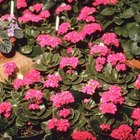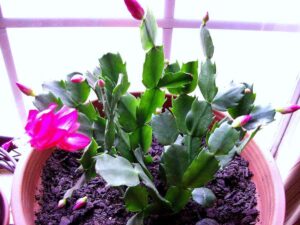As pet owners, we strive to create a safe and nurturing environment for our furry companions. However, many household plants pose hidden dangers, and one such prickly contender is the Kalanchoe. Known for its vibrant leaves and resilient presence, this succulent has gained popularity in homes and gardens alike. But is Kalanchoe poisonous to dogs? This question weighs heavily on the minds of conscientious pet owners. Understanding the ramifications of bringing such a plant into your home can make a significant difference in your pet’s safety.
Delving into the allure of Kalanchoe, one must first understand its inherent characteristics. This genus encompasses a variety of species, with the most common being Kalanchoe blossfeldiana, which showcases bright flowers and fleshy leaves. Its ability to thrive in various environments often leads people to perceive it as harmless or low maintenance. However, underneath this attractive exterior lies a botanical enigma: Kalanchoe harbors compounds that can be toxic to our canine companions.
The crux of Kalanchoe’s toxicity lies in the presence of bufadienolides—chemical compounds detrimental to dogs upon ingestion. These cardiotoxic agents can induce a plethora of symptoms, ranging from mild discomfort to severe health complications. For a pet owner, awareness and vigilance are paramount.
Recognizing the Symptoms: What to Watch For
Understanding the signs of Kalanchoe poisoning in dogs can be vital for early intervention. Symptoms may vary in intensity depending on the amount ingested and the individual dog’s sensitivity. Some of the most frequently observed indicators include:
- Vomiting: The most common response to ingesting any toxic substance is gastrointestinal distress. Dogs may exhibit repeated vomiting.
- Diarrhea: Similar to vomiting, diarrhea can result from the body’s attempt to expel the toxic agents. This symptom, if prolonged, can lead to dehydration.
- Sluggishness: A once-energetic dog may become lethargic or unusually quiet. This behavioral change can often indicate discomfort or health issues.
- Cardiac Arrhythmias: In severe cases, the impact of bufadienolides can manifest as irregular heartbeats, which require immediate veterinary attention.
- Excessive Drooling: A dog might drool excessively if feeling nauseated or distressed by poisoning.
If you notice any combination of these symptoms, it’s essential to consult your veterinarian promptly, as swift action can mitigate potential long-term damage.
Preventive Measures: Keeping Your Pet Safe
Awareness is the first step toward prevention. For pet owners who either currently own a Kalanchoe or are considering adding one to their plant collection, several measures can help ensure a safe living environment:
- Placement Matters: If you must have Kalanchoe in your home, consider placing it in an area that is completely inaccessible to your dog. High shelves or closed-off spaces can minimize the risk of your canine companion reaching this plant.
- Educate Yourself and Others: Share knowledge about Kalanchoe’s toxicity with family members, friends, and fellow pet owners. The more people understand potential dangers, the better equipped they will be to avoid them.
- Opt for Pet-Friendly Alternatives: Explore non-toxic plants that can provide aesthetic beauty without compromising the health of your dog. Plants like spider plants, Boston ferns, and certain varieties of succulents pose less threat.
- Monitor Behavior: Being attentive to your dog’s behavior can be a preventative measure. If your dog has shown interest in chewing or attempting to consume plants, redirect their attention to safe chew toys.
Understanding Alternatives: Safe Plants for Your Home
With the potential dangers posed by Kalanchoe, it begs the question: What alternatives are available for pet owners looking to add a touch of greenery without endangering their dogs? Fortunately, numerous safe and striking plants exist that can beautify your home while providing peace of mind. Consider these options:
- Ponytail Palm (Beaucarnea recurvata): This unique succulent complements any decor and is completely safe for pets.
- Spider Plant (Chlorophytum comosum): Known for its air-purifying qualities, this plant is non-toxic and thrives in various lighting conditions.
- Boston Fern (Nephrolepis exaltata): A lush addition to any home, Boston ferns are non-toxic to dogs and can enhance indoor air quality.
- Parlor Palm (Chamaedorea elegans): Elegant and easy to care for, the parlor palm adds a tropical touch without posing risks to your pets.
Conclusively, as charming as Kalanchoe may appear, its potential toxicity serves as a reminder of the careful consideration that pet owners must undertake. By fostering awareness about Kalanchoe and implementing preventative strategies, we can create a safer environment for our faithful companions. Protecting dogs from the dangers of toxic plants fosters a more harmonious coexistence between pets and their human families, ensuring that both can enjoy the beauty of the indoor garden together.





Leave a Comment